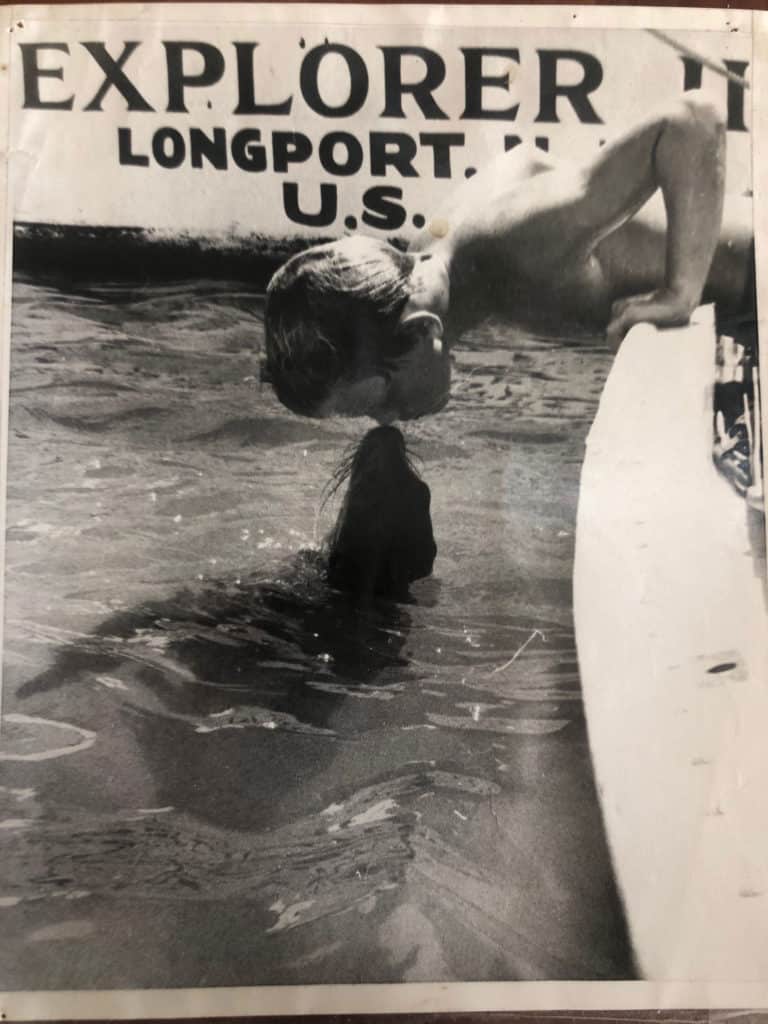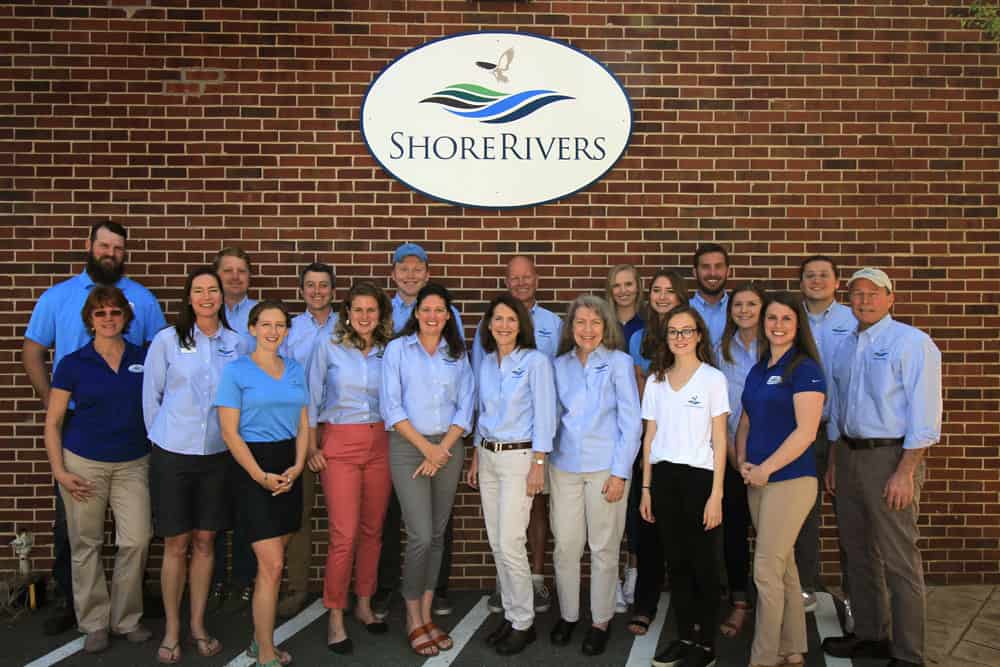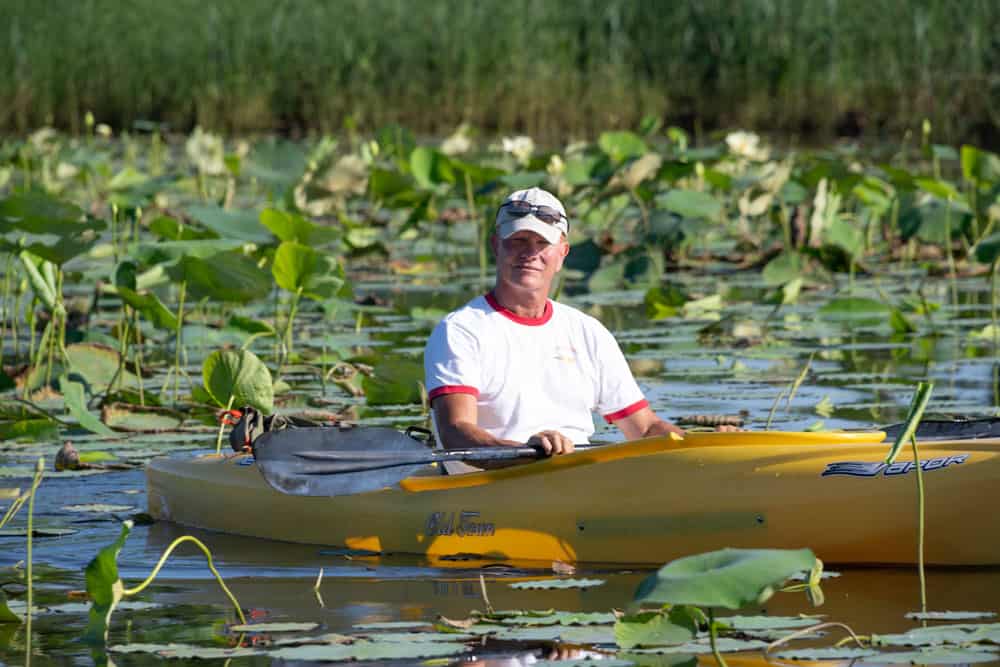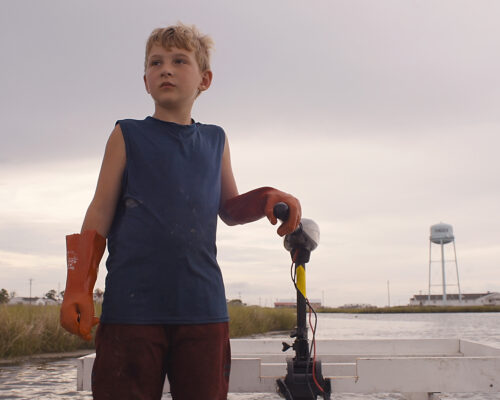Prince of the Wye
Jeff Horstman was nine years old in 1968, living on a New Jersey beach, when his mother, Nina, adopted an abandoned seal pup. Coaxing it to drink mackerel pureé from a baby bottle, they raised it to become a 200-pound adult, teaching it obedience skills and tricks. Through a doggy door, the seal had free run of their house. It would come and go as it pleased, take off in the ocean to catch fish, swim alongside Jeff when he was surfing, and then waddle and hump its way onto their plastic covered couch, barking for attention and treats. Soon they adopted a second seal to keep it company.
Word spread about the expertise of this family of seal trainers and National Geographic published a profile. The following year the family welcomed the opportunity to move onto a research ship based in Marathon Key, Florida, studying marine mammals and teaching them essential underwater tasks. Jeff lived on the ship for four years with no formal schooling. Dress code: cutoffs and a tee shirt. What he did learn was to free dive and SCUBA, spearfish and pilot, and to navigate the vicissitudes of island life.
At fourteen, Jeff and his mother were returning to Florida from a vacation when they stopped off at South of the Border to see a marine mammal exhibit advertised along the I-95 interstate. An injured, mistreated sea lion was on display. Nina angrily confronted the owners, then bought it on the spot, carrying the animal in her station wagon back to the ship. She named it Tinker Bell, and it liked to wander. One day the ship received a telephone call from Boca Grande that an animal with a collar reading Tinker Bell had ensconced itself in someone’s swimming pool during a garden party and was being fed cucumber sandwiches by the guests. Nina went to fetch it.

The owner of the pool was Arthur Houghton, an industrialist and heir to the Corning Glass fortune. Arthur fell in love with Nina, who by then had separated from Jeff’s father. Waging a successful courtship, Houghton sent his private plane to pick up Nina and her menagerie—Jeff and his three siblings, a parrot, several dogs, and five marine mammals—and fly them to his 2,000-acre plantation that sprawled for miles alongside the Wye River on Maryland’s Eastern Shore. Jeff went from four years of a Huck Finn-like existence to having to wear coat and tie at the table with a butler behind each chair and a strict new stepfather at its head. At fourteen, his world had been upended. He felt bereft and lost. As he describes it, he was in a very bad place.
What eventually rescued him, and what would offer solace and richness for the rest of his life, was the Wye River. There was the old wooden bridge that became his diving platform. He explored the miles of shoreline on horseback, studying every cut and cove, following the waterfowl migrations and learning to hunt, fishing the ponds, and finding delight in the heron rookeries and the osprey harrying the bald eagles.
Jeff received private tutoring to catch up on his three Rs, attended Washington College, married his longtime sweetheart, Beth Church, and rehabbed an abandoned cottage adjacent to the bridge so he could walk to his first job with the Maryland Park Service, where naturalist colleagues steeped him in estuarine ecology. These were glory days for a young man of his temperament, but there were shadows over the landscape.
As he explained to me, it was “during those years that I witnessed marked changes to the river—the water losing its clarity, turning brown, the grass beds disappearing, the erosion of the land, the decimation of the fish and waterfowl populations. These degradations weren’t taking decades, they were happening over the course of a few years. I wanted to do something about it. It was an itch I couldn’t scratch.”

Jeff went on to found a pension management firm outside Philadelphia, but remained involved in clean water issues. He served on the Chesapeake Bay Foundation President’s Advisory Council, the board of the University of Maryland’s Hughes Center for Agro-Ecology, and was appointed to the Chesapeake Bay Trust board. In 2014, he decided to return to the Eastern Shore and came to work with me at Midshore Riverkeeper Conservancy (MRC) in Easton, first as the Miles-Wye Riverkeeper and then succeeding me as MRC’s director. As we built the organization, Jeff was already envisioning an expansive, stronger river advocacy program—one that could wield regional influence in protecting Maryland’s waterways. During 2017 he realized his vision, orchestrating the successful merger of MRC with two other nonprofits—the Chester and Sassafras River Associations—to create ShoreRivers and becoming its first director.
Jeff retired last month, but the organization he framed and led now employs scientists, engineers, educators, and advocates, brings annual funding in the millions to our communities, and provides leadership in environmental education, agricultural restoration, policy advocacy, and community engagement throughout the Bay watershed.
“ShoreRivers has a fantastic staff,” he says, “what I call ‘staff magic.’ People we hired right out of college are now statewide leaders in their areas of expertise. Teachers throughout the state are replicating the education programs we’ve created. Our farmers are appreciative of the approximate $15 million in innovative clean water projects that we’ve developed. For the first time the Eastern Shore has its own effective advocacy platform, and ShoreRivers is providing a strong and resounding voice in Annapolis and beyond to advance it. So, yes, in truth, I am immensely proud of what our team has accomplished and of what ShoreRivers will accomplish in the future. And I am grateful to our staff, board, membership, volunteers, funders, and communities, for recognizing the need and responding to the call for clean rivers.”
What is perhaps even more remarkable than Jeff’s achievement as the architect of ShoreRivers is the journey that led him to environmental stewardship—one populated with seals, a wounded sea lion, and his beloved Wye River.




